Join More Than 50,000+ Subscribers and get latest camera news and rumors
NEW CAMERA VIDEOS ON YOUTUBE
|
By admin, on April 1st, 2025

That’s a big question we are getting in the next set of every comment when we are posting comparisons related to Canon R50V.
We have to understand a basic rule that whenever a camera maker announces a specific camera, like the 50V has been announced by Canon, they generally wait for the peak sales period, which is approximately 7 to 8 months from the shipping date.
And in that specific period, they try to avoid announcing a camera in approximately the same price range, so there is very little chance that we will see Canon R10V in the year 2025. Since the shipping date of Canon R50V is April 28, and if you consider a 7 to 8 months gap, then it falls somewhere around November and December. So it is safe to assume that even if they are planning to announce a R10V, we will see it in the first quarter of 2026 or later on.
Technology Limitations
Canon’s 24-megapixel CMOS sensor, which is being used inside Canon R10, Canon R50, and Canon R50V, has been stretched to its technical limits already in the R50V.
As we all know, the Canon 24-megapixel DPAF CMOS sensor has a readout speed of somewhere around 25 milliseconds, and it’s based on FSI technology. The first threshold was already visible when the Canon R10 was announced. Due to the readout speed limitation, even in R10, we have to face a 1.5X crop in 4K 60 FPS.
In the recently announced Canon R50V camera, Canon has done everything possible to stretch the limits of the existing 24MP FSI CMOS sensor, and that’s why we are getting clog3, 10-bit internal recording at 4K 60 FPS from the existing sensor when paired up with the latest Digic X image processor.
And again, due to the readout limitation, we still have a 1.5X crop at 4K 60 FPS recording.
Now, if Canon is planning to introduce an R10V camera in near future, they have to use a new sensor, and they have no other option left since we have already seen the stretched limits of the existing 24MP FSI DPAF CMOS sensor in the R50V camera.
The Canon 32 MP sensor is more than 6 years old, a good competitor of the Sony 26 MP sensor used in ZV-E10 II, A6700, and FX30. The 32-megapixel sensor was first announced inside the Canon 90D body, which was announced back in August 2019, so it is more than 6-7 years old. While Canon R7 can record 4K 60 FPS uncropped with a line-skipping method, where there is a loss in quality, if you want to record high-quality 4K 60 FPS video, you have to face a 1.8X crop.
Canon R10V may arrive with Canon 32 MP DPAF sensor: By adopting the R7’s 32.5-megapixel sensor, Canon could position the R10V as a strong competitor to the Sony ZV-E10 II, offering uncropped 4K 60fps and a robust vlogging feature set.
Another important thing is that both Canon R7 and R10 were announced on the same day, in May 2022. So it is quite obvious that Canon will prefer a high-end body to introduce its new sensor technology into the market, which will help Canon generate more revenue. That is what every camera maker does—for example, Sony first introduced the FX30 camera with a 26MP sensor. Although the 26MP sensor has been used by Fuji for the past 2 to 3 years, that doesn’t matter in Sony’s lineup. It started with the FX30, then Sony used that sensor in the Sony A6700 camera, and later on, they finally introduced in the Sony ZV-E10 Mark II.
So as you can see, technology travels into more affordable bodies over time, but at the time of introduction, camera makers generally select a higher-end body.
Instead of refreshing Canon R10 series in Q4 of 2025 or Q1 of 2026, there is a high probability the Canon R7V or R7 Mk II with a brand new sensor capable to record 6.2k open gate will be prioritized
What’s Coming Next from Canon in the APS-C Range in 2025?
Most likely, Canon will introduce the Canon R7V / R7 Mk II camera first, even before refreshing the Canon R10 lineup
- It also aligns with an existing set of rumors [Canon upcoming cameras 2025]: As per the information we have published in the past, Canon is planning to introduce Canon R7 successor Canon R7 Mark II in Q3 or Q4 of 2025, but its inresting to see what coming first, Canon R7 MK II or R7V or both of them will arive together?
- Canon R7 Mark II, a photography-focused upgrade, and the R7V, a video-centric version tailored for videographers. Having box style design, without a mechanical shutter, 6k 60FPS, with 32-bit audio option,n and with active cooling vents will help filmmakers and cinematographers to pick a camera for professional use.
As we have already discussed above that Canon introduces their new sensor tech and capabilities in their mid-to-high-tier bodies first. So, Canon R7 or assocated series like Canon R7 Mk II / R7V is a perfect and most logical choice for such an upgrade.
Get LIVE RUMORS –> FACEBOOK | TWITTER | INSTAGRAM to get live news + Canon rumors 24X7
By admin, on April 1st, 2025
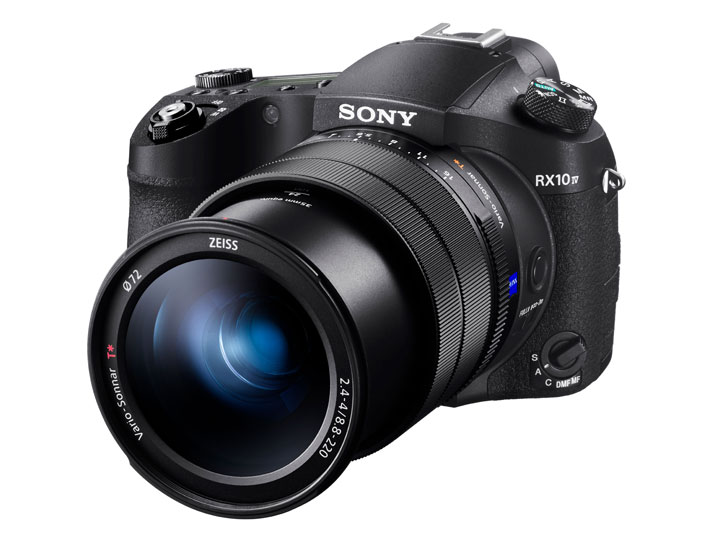 Sony RX10 IV One of my fav megazoom cameras, the Sony RX10 IV has officially been discontinued. As a large-zoom fixed-lens camera in Sony’s lineup, it offered 25x optical zoom, enabling shooting needs from 24-600mm equivalent focal length, making it a top choice for many Sony users. However, this model has now been officially listed as discontinued by some Japanese e-commerce sites (although it is still in stock on overseas platforms like Amazon and B&H). According to current information, Sony has not announced any successor to this model. However, with the increasing popularity of large-zoom fixed-lens cameras from Panasonic and Nikon, whether Sony will release a new model remains to be seen. Are you looking forward to a new model in this series?
Follow us on our social pages FACEBOOK | TWITTER | INSTAGRAM, If you have time –>see more Sony Alpha Rumor
By admin, on March 31st, 2025
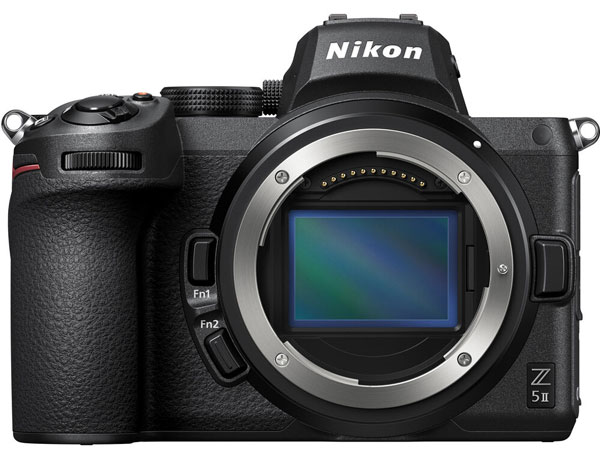
Nikon Z5 II specification surfaced on a website, that is not much different from the specification we posted a while ago, take a look at the rumored specification
Rumored Specifications:
- 24.5MP backside-illuminated CMOS sensor
- Equipped with Expeed 7 image processor
- 14 fps RAW, 30 fps JPEG shooting
- 5-axis in-body image stabilization
- Pixel shift
- 4K video recording at 30fps [Uncropped]
- DX crop 4K at 60 fps in 10-bit
- 1080p video recording at 120fps
- The 273-point hybrid autofocus system
- Real-time eye/animal eye tracking/Bird eye AF
- 3.69-million-dot OLED electronic viewfinder
- 3.2-inch fully articulating screen
- Dual UHS-II SD card slots
- USB-C charging, compliant with the latest EU regulations
- Size and weight are almost identical to the current
So, in the core specification, we cannot spot any significant difference from what we have already shared with you. [Nikon Z5 II Coming in Summer of 2025]
Nikon Z50 II Arrival Date
Nikon Z5 II arrival date – as we have mentioned earlier the Nikon Z50 II demand is at its peak and Nikon will surely allow the Z50II to reach its peak period, which generally lasts 7 to 8 months after the camera’s announcement. In general, camera manufacturers avoid announcing two different cameras in the approx same price range due to the fear that each will cannibalize the other’s sales.
Since the Nikon Z50 II was announced back in November 2024, it seems quite logical for Nikon to announce the Z5 II camera sometime in the summer months of 2025. So, the Announcement is expected on or before August 2025.
Must watch – Best Lenses for Nikon Z50 II in 2025
List of Upcoming Nikon Cameras and Lenses
– COOLPIX P1100 [already announced]
– Z 35mm f/1.2 S (Already Announced)
– Z 28-135mm F4 PZ (announced )
– New Z series of cinema lenses (announced )
– Z9II (Q4 of 2025)
– Z5II (April 2 2025)
Support us – Use or affiliate link Amazon.com | B&H Store | Adorama.com for the next purchase u make – it helps us 
Follow us on our social pages FACEBOOK | TWITTER | INSTAGRAM to get live Camera News + Nikon Rumors 24X7
source – camerabeta webio | NR.com
By admin, on March 30th, 2025

Nikon registered a new trademark, Nikon Z Cinema, on February 13, 2025. It will be very interesting to see whether Nikon is expanding its Z Cinema lineup to RED camera bodies only or if they will also bring dedicated cinema bodies to mirrorless consumers. just like Canon did with Canon R50V.
Support us – Use or affiliate link Amazon.com | B&H Store | Adorama.com for the next purchase u make – it helps us 
Follow us on our social pages FACEBOOK | TWITTER | INSTAGRAM to get live Camera News + Nikon Rumors 24X7
By admin, on March 28th, 2025
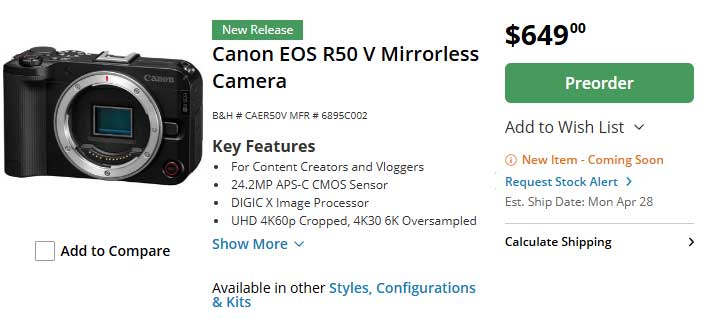
According to the latest information, the shipping of the Canon R50V camera will start from April 28, 2025. That means even the global shipping of the camera will start from April 28, 2025. So, specifically in Asian countries, the camera will become available from the first week of May 2025.
Canon R50V Camera available at B&H Store
Follow us on our social pages FACEBOOK | TWITTER | INSTAGRAM to get live Camera News + Canon rumors 24X7
By admin, on March 28th, 2025

According to your latest set of rumors, the Nikon Z5 Mark II camera will be available on the second of April, so the wait is over, and it is about to arrive very soon. As a user, it has now been confirmed that the camera features the future Nikon ZF Camera sensor, Expeed 7 image processor, and the goodness of the Z6 Mark III.
It will create a benchmark in terms of the full-frame camera level. Stay tuned more updates coming
Nikon Z5 Mark II Specifications
| Feature |
Specification |
| Sensor |
24.5MP Full-Frame BSI CMOS Sensor |
| Processor |
Expeed 7 Image Processor |
| Video Recording |
4K UHD 30p / Full HD 120p, 1.5x 60p with crop |
| Autofocus |
273-Point Hybrid AF with Eye and Animal Detection |
| Image Stabilization |
5-Axis In-Body Image Stabilization |
| Viewfinder |
Bright 3.69M-Dot OLED Electronic Viewfinder |
| Display |
3.2″ Tilting Touchscreen LCD |
| Memory Card Slots |
Dual UHS-II SD Card Slots |
| Connectivity |
Built-In Wi-Fi and Bluetooth Connectivity |
| Charging |
USB-C Charging and Power Delivery Support |
Support us – Use or affiliate link Amazon.com | B&H Store | Adorama.com for the next purchase u make – it helps us 
Follow us on our social pages FACEBOOK | TWITTER | INSTAGRAM to get live Camera News + Nikon Rumors 24X7
source – NR.com
This post was updated on March 28, 2025 – By thenewcamera.com team
By admin, on March 27th, 2025
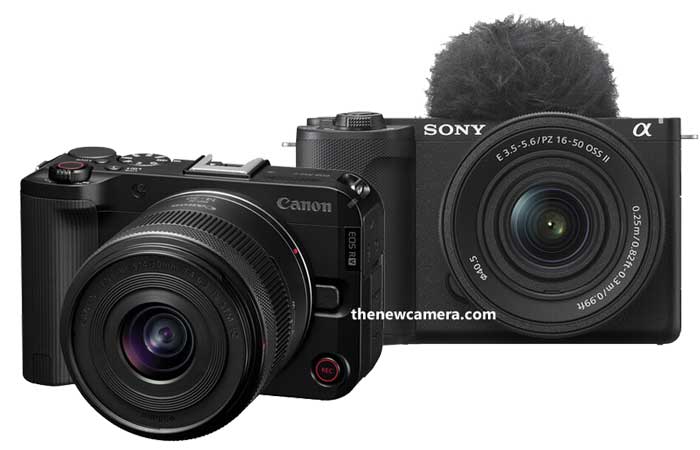
Canon R50V vs Sony Z10 Mark II. Let’s discuss the major differences between the two, then we will do some deep core specification analysis so you can understand very clearly which camera you should buy.
Canon R50 V Specifications and Pricing
Initially, the Canon R50 V camera is available with a 24-megapixel DPAF CMOS sensor, the same sensor that is being used by entry-level cameras such as Canon R50 and Canon R10. If you buy it with a kit lens, you have to pay approximately $849, and when you are buying the body only, you have to pay approximately $649.
Sony Z10 Mark II Specifications and Pricing
Now, the Sony Z10 Mark II camera was released on July 10, 2024, and uses a 26-megapixel APS-C BSI CMOS sensor from FX30 or Sony A6700 camera, meaning it’s a flagship sensor. With a kit lens, you have to pay $1,099, and without a kit lens, you have to pay only $999.
So, the Canon body is a lot more affordable compared to the Sony Z10 Mark II camera. Now, let’s dive deep into the detailed core specifications of both cameras.
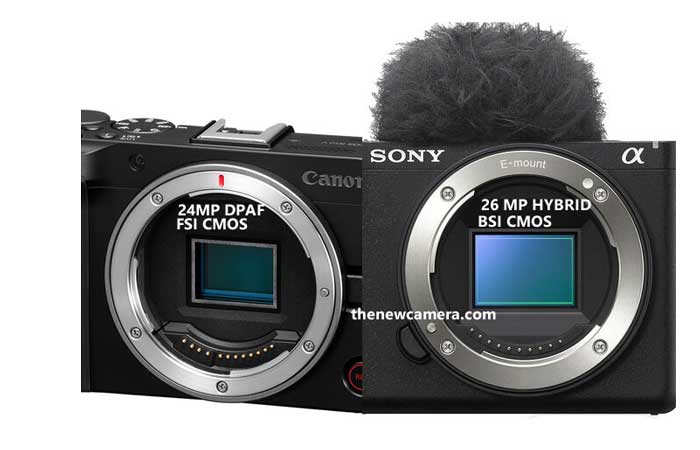
Key Differences in Sensor Technologies
So, initially, we have some basic differences between the two. The Canon uses an FSI CMOS sensor with a resolution from entry-level models, and the Sony Z10 Mark II uses a BSI CMOS sensor from higher-end models. Along with that, we also have a price difference between the two.
Best Camera for Recording 4K 60p Video

Crop Factor Comparison
If you compare both the Canon R50 V and Sony ZV-E10 Mark II, the advantage of the Sony ZV-E10 Mark II camera is clearly visible as it does only a 1.1x crop while recording 4K 60p video. On the other side, we have the Canon R50 V camera, which does a 1.5x crop while recording 4K 60p video. Both cameras allow you to record 10-bit videos at 4K 60p, but at the same time, you have to face a crop in Canon.
Usability and Stabilization
Usability-wise, the Sony ZV-E10 Mark II camera is more usable since, even while recording 4K 60fps with a crop, we can utilize the Active SteadyShot mode as well as the gyro-based image stabilization mode. If you are shooting handheld videos, that will, in turn, help you get stable footage without a gimbal. The electronic image stabilization (EIS) is very effective when you are using it at 30fps or 24fps recording. However, since it already has a very significant 1.5x crop, it doesn’t work that well.
Final Recommendation Best Camera for high-speed 4k videos
So, overall, for 4K 60fps recording, we highly recommend you to get the Sony ZV-E10 Mark II camera. Codec and Color Depth in Both Cameras
Video Codecs
Canon R50 V Video Capabilities
Now, with a 24-megapixel FSI CMOS sensor, our recently announced Canon R50 V camera is able to record 10-bit 4:2:2 videos in H.265 or H.264 codec. You can also record your videos in Canon Log 3 as well as in HLG HDR modes—all these features are available in this entry-level model.
Sony Z10 Mark II Video Capabilities
With a 26-megapixel BSI CMOS sensor, Sony does the same. It also records 10-bit 4:2:2 videos in XAVC HS (H.265) and XAVC S (H.264). Additionally, it supports S-Log2, S-Log3, and Hybrid Log Gamma (HLG), offering up to 14 stops of dynamic range.
Video codec – Comparison and Conclusion
So, in terms of video codec, both cameras record the same 10-bit videos, and neither of them has any limitations over log profiles or any other video codec restrictions. In terms of usability for beginners, videographers, and content creators, both cameras perform well. We are not discussing professional use at this moment.
Detailed Video Specifications Comparison Table
| Feature |
Canon R50V |
Sony ZV-E10 Mark II |
| Max Video Resolution |
4K 60p (cropped, crop factor unspecified), 4K 23.98p (assumed uncropped based on preview) |
4K 60p (1.1x crop), 4K 30p/24p (uncropped, oversampled from 5.6K) |
| Full HD Capabilities |
1080p up to 120p (implied from slow-motion options) |
1080p up to 120p |
| Video Codecs |
H.265, H.264 (10-bit 4:2:2 internal with log) |
XAVC HS (H.265), XAVC S (H.264) (10-bit 4:2:2 internal) |
| Color Profiles |
C-Log, custom picture profiles from Canon cinema series |
S-Log2, S-Log3, HLG, Creative Looks (e.g., cinematic presets) |
| Bit Depth |
10-bit internal recording |
10-bit internal recording |
| Dynamic Range |
Not specified (likely ~12-14 stops with C-Log, based on Canon APS-C trends) |
Up to 14 stops with S-Log3 |
| Streaming |
4K 60p via USB-C (dedicated quick streaming button) |
4K 30p via USB-C (UVC/UAC support, improved from original’s 720p) |
| Slow Motion |
Supported with option to bake in or exclude audio (specific frame rates not detailed) |
1080p 120p, 4K 60p slo-mo with 2x playback (no audio baking options specified) |
| Recording Limit |
Not specified (likely no limit based on Canon trends) |
No recording time limit (improved thermal management over original) |
| Overheating |
Not specified (DIGIC X typically manages heat well, no issues noted in preview) |
Improved over ZV-E10 but can overheat after ~20-30 mins in 4K 60p at high ambient temps |
| Autofocus in Video |
Dual Pixel AF II (fast, reliable tracking, eye/face detection) |
Fast Hybrid AF with Real-time Eye AF, Tracking, Product Showcase mode (495 phase-detect points) |
| Stabilization |
No IBIS, relies on lens IS (e.g., 14-30mm PZ) or digital stabilization (crops further) |
No IBIS, Active SteadyShot (digital, ~1.1x crop), lens OSS support |
| Cinematic Features |
“Peter McKinnon mode” (baked-in cinematic bars), power zoom lens support |
Background Defocus button, vertical shooting metadata, Cinematic Vlog mode |
| Crop Factor in 4K |
Cropped in 4K 60p (extent unspecified), uncropped in 4K 23.98p (assumed) |
1.1x crop in 4K 60p, uncropped in 4K 30p/24p |
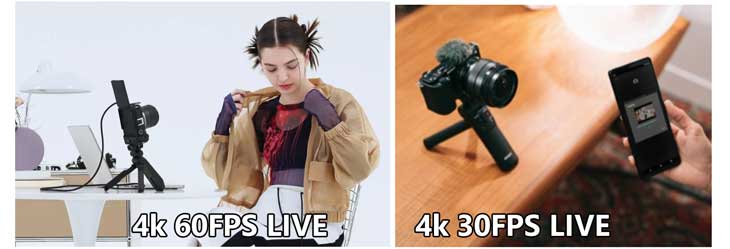
Best Camera for Live Streaming
Canon R50 V Live Streaming Capabilities
The recently announced Canon R50 V supports streaming up to 4K 60fps via USB-C, but at the same time, you have to consider the fact that it still has a 1.5x crop. This means you need to use ultra-wide-angle lenses when placing the camera in front of you.
Sony ZV-E10 Mark II Live Streaming Capabilities
On the other hand, in the Sony ZV-E10 Mark II, video streaming or USB streaming remains limited to 4K 30fps via UVC/USC.
Best Camera for Live Streaming
So, you can consider the Canon R50 V as a clear winner in terms of streaming capability, but it also suffers from a crop limitation, which you need to keep in mind while choosing between these two cameras.
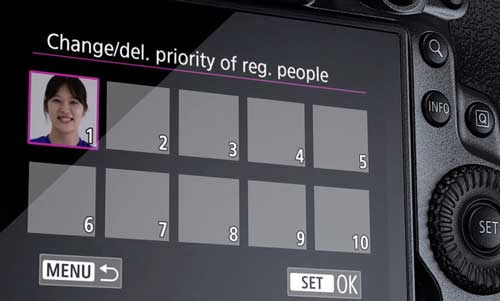
Canon R50V Autofocus Capabilities
Canon R50V camera uses a Dual Pixel CMOS autofocus sensor paired with DIGIC X image processor, and according to Canon’s official press release, they are using the same autofocus AF algorithm as they have used in the Canon R5 Mark II camera. The camera also includes subject tracking modes, which include birds, animals, airplanes, moving vehicles, as well as one of the most important modes that has been added to this camera—face registration. Here, you can technically register one, two, or multiple faces, and even in a crowd when you are creating a video sequence, like when you’re doing wedding cinematography. Then, even in a crowd, if you have already registered the bride and groom’s faces in the camera, it will track only those two.
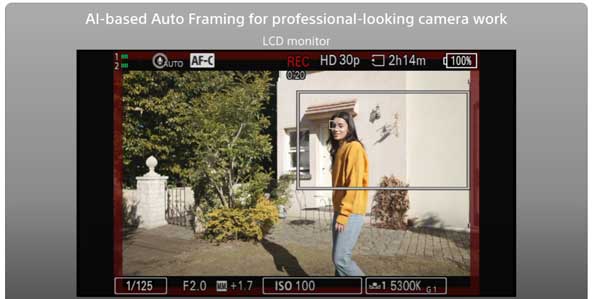
Sony ZV-E10 Mark II Autofocus Capabilities
Now, in the Sony ZV-E10 Mark II camera, we have an advanced video autofocus tracking mode, which is directly coming from the Sony A7R V. It does have predictive AI tracking, just as we have seen in higher-end Sony models, so it is also very good at predicting human faces, human bodies, animals, birds, and eyes. Moreover, the camera also has a built-in AI auto-framing mode, which, in turn, the Canon R50 V doesn’t have. This particular AI auto-framing mode helps content creators, especially solo content creators—those who create cooking videos in a single room. The camera will automatically track them and crop them in a frame, like the way a professional cinematographer shoots their movement.
Best Camera with Usable AF in Video
So, each of these cameras does have brilliant autofocus tracking capability and some specialized modes. The Canon R50 V is more suitable for wedding cinematography, where you can register people’s faces for autofocus tracking, whereas in the Sony ZV-E10 Mark II camera, we have AI auto-framing mode, which is more useful for content creators.
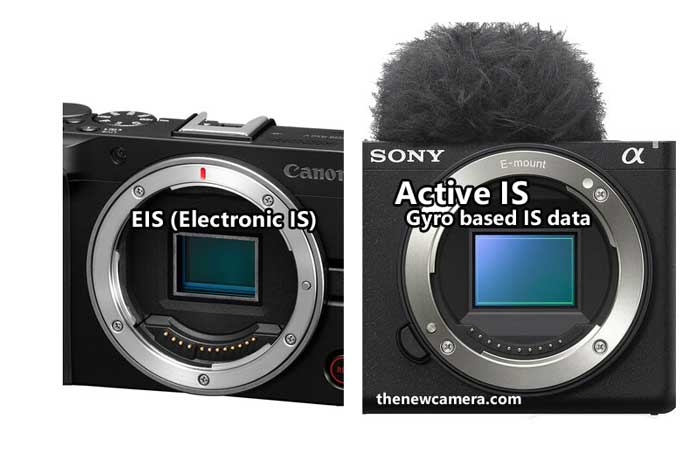
Canon R50 V Image Stabilization
Canon R50 V camera is a base model, and we are not able to expect too much out of it. Since the absence of sensor-shift image stabilization looks a bit logical to me, any camera maker out there is not offering any sort of IBIS mechanism in that price range. Although the camera does have EIS (Electronic Image Stabilization), which is effective for video, you have to use ultra-wide-angle lenses when you are using EIS in the camera for creating content or shooting any sort of videos. But keep in mind that EIS is only effective in shooting videos, not in still photography.
Sony ZV-E10 Mark II Image Stabilization
Sony ZV-E10 Mark II camera comes at a higher price, and at least we were expecting the presence of some sort of IBIS feature inside it. But for video recording purposes, we do get Active I.S. inside this camera, supported with a gyro-based image stabilization system. So, specifically, when you are using gyro, you get very stable footage with minimal crop, but you have to post-process it on your laptop or PC using Sony Catalyst Browse software. Other than that, we have Active I.S. mode, where Sony does crop significantly, but we do get gimbal-like stable footage from the camera.
Best camera for Handheld Video
So overall, none of the cameras feature sensor-shift image stabilization systems, but in the Sony ZV-E10 Mark II camera, we do have gyro-based image stabilization as well as Active Mode, which is very effective. Price-wise, what we are getting in Canon R50 V also looks very logical to me, specifically if you are into content creation. So, it’s very obvious that if you are paying a bit higher price for a camera body like the Sony ZV-E10 Mark II, you will get better image stabilization performance, which is specifically made for videographers and cinematographers.
Audio Specifications
| Feature |
Canon R50V |
Sony ZV-E10 Mark II |
| Microphone Port |
Yes (3.5mm) |
Yes (3.5mm) |
| Headphone Port |
Yes (3.5mm) |
Yes (3.5mm) |
| Onboard Microphone |
Standard stereo mic (not emphasized as vlogging-specific) |
Directional 3-capsule mic with windscreen (optimized for vlogging, improved over original) |
| Digital Audio Support |
Digital hot shoe (24-bit, 4-channel audio with compatible Canon mics) |
Multi-interface shoe (digital audio with compatible Sony mics, e.g., ECM-W2BT) |
Body Design & Battery Life
Body design-wise, both cameras are the same, and even the weight is almost equal, at under 400 grams. However, in the Sony ZV-E10 Mark II camera, we get a deeper hand grip as well as a battery life similar to that of a full-frame camera. The NP-FZ100 battery is capable of giving you approximately 610 shots and more than 2 hours of continuous 4K 30p video recording.
Body Design
| Feature |
Canon R50V |
Sony ZV-E10 Mark II |
| Dimensions |
116 x 86 x 69 mm |
121 x 68 x 54 mm |
| Weight |
Not specified (likely ~375g with battery, based on R50) |
377g (with battery and SD card) |
| Viewfinder |
None (EVF omitted to reduce cost) |
None |
| Screen |
3-inch vari-angle LCD (lower resolution than R50, exact dots unspecified) |
3-inch fully articulated LCD (1.04M dots, touch-capacitive) |
| Tally Light |
Yes (front-facing, with red box on screen) |
Yes (front-facing, improved visibility over original) |
| Vertical Video Support |
Quarter-20 mount on side for vertical tripod/gimbal use |
Vertical shooting metadata (no physical mount, relies on software orientation) |
| Weather Sealing |
None |
None |
| Ergonomics |
Not detailed (likely similar to R50 with deep grip) |
Larger grip than original ZV-E10, two control dials (top and rear) |
| Buttons/Dials |
Quick streaming button, standard Canon layout |
Background Defocus, Photo/Video/S&Q toggle, customizable Fn button |
Ports and Connectivity
| Feature |
Canon R50V |
Sony ZV-E10 Mark II |
| USB |
USB-C (supports streaming and charging) |
USB-C 3.2 Gen 1 (supports streaming and charging) |
| HDMI |
Not specified (likely micro HDMI based on R50) |
Micro HDMI (Type D) |
| Microphone Port |
Yes (3.5mm) |
Yes (3.5mm) |
| Headphone Port |
Yes (3.5mm) |
Yes (3.5mm) |
| Remote Port |
Yes (2.5mm) |
No (remote via Bluetooth or USB) |
| Hot Shoe |
Digital hot shoe (24-bit, 4-channel audio support) |
Multi-interface shoe (digital audio support) |
| Wireless |
Wi-Fi (version not specified), Bluetooth (assumed based on R50) |
Wi-Fi (2.4 GHz), Bluetooth 5.0 |
Battery and Storage
| Feature |
Canon R50V |
Sony ZV-E10 Mark II |
| Battery Type |
LP-E17 (same as R50) |
NP-FZ100 (larger capacity than original ZV-E10’s NP-FW50) |
| Battery Life (CIPA) |
Not specified (likely ~230 shots based on R50) |
610 shots (significant improvement over ZV-E10’s 440 shots) |
| Charging |
USB-C charging supported |
USB-C charging supported (faster charging with PD support) |
| Storage |
Single SD slot (UHS-II) |
Single SD slot (UHS-II support, faster than ZV-E10’s UHS-I) |
In contrast, the Canon R50 V camera uses the regular LP-E17 battery, which offers approximately 230 shots and around 1 hour and 20 minutes of 4K 30p video recording.
Still Photography & Sensor Comparison
For still photography, the Canon R50 V camera uses a 24-megapixel FSI CMOS sensor and supports up to 12 FPS with an Electronic First Curtain Shutter (EFCS) and approximately 15 FPS with an electronic shutter.
Whereas in the Sony ZV-E10 Mark II camera, we have a 26MP BSI CMOS sensor with a maximum continuous shooting speed of 11 FPS, limited to an electronic shutter only. Technically, having an EFCS sensor-based camera is a better option if you’re planning to shoot sports or wildlife photography.
As we all know, Canon’s 100-400mm lens is also available at a budget-friendly price, making it a great pair for those into sports and wildlife photography, as well as content creation. However, at the same time, we must consider the advantage of a 26MP BSI CMOS sensor.
| Feature |
Canon R50V |
Sony ZV-E10 Mark II |
| Resolution |
24MP |
26MP |
| Burst Shooting |
15 fps (electronic), 12 fps (electronic first curtain) |
11 fps (mechanical/electronic) |
| RAW Support |
Yes |
Yes (Compressed/Uncompressed) |
| Image Stabilization |
None (lens-based only) |
None (lens-based only) |
Best Camera for Still Shooters
If you are not into sports and wildlife photography and are looking for higher detail, better low-light performance, and enhanced dynamic range, then getting a 26MP sensor will be a better decision.
Final Conclusion: Which Camera is Best for You—Canon R50 V or Sony ZV-E10 Mark II?
Tailored for Videographers & Content Creators
Both of them are custom-tailored for videographers or content creators, and the best part is Canon is offering us a 10-bit video recording mode in a budget body. But at the same time, we do have some limitations, like having a 1.5x crop in 4K 60 FPS mode. Other than that, we also have limitations in the Canon RF mount, which actually limits us in selecting budget lenses.
Canon Lens Availability & Limitations
So even if you have purchased a budget body from Canon, then it will be a bit hard to find a usable prime lens within budget. Specifically, if you have purchased the Sony ZV-E10 Mark II camera by paying a bit higher price, you can use lenses like Viltrox Air series, which come at a very low price with usable high-grade optics.
Choosing Based on Personal Requirement
But again, it all depends upon your own personal requirement and usage. If you have already sorted out the best lenses that you are going to use for the Canon R50 V camera and having a crop in 4K 60 FPS mode doesn’t bother you, then without a doubt, the R50 V is much more usable for you.
Advantages of Sony ZV-E10 Mark II
Similarly, in the Sony ZV-E10 Mark II camera, we are getting uncropped 4K 60 FPS mode, we are getting active image stabilization as well as AI autofocus and ZV-E10’s in-body stabilization, plus some extra features and extra battery life in the Sony camera. The most important factor is the range of lenses available for the ZV-E10 Mark II.
Final Verdict
So for me, the best budget camera is the Canon R50 V, but if you consider lens availability, then you have to spend a lot more to get perfect Canon lenses for your camera.
Decision-Making Pros and Cons Table: Canon R50V vs Sony ZV-E10 Mark II
Sony ZV-E10 Mark II B&H | Amazon.com
Canon R50V Camera available at B&H Store | Adorama.com | amazon.com
| Category |
Canon R50V |
Sony ZV-E10 Mark II |
| Price |
 Lower cost at $649 body-only or $849 with kit lens – excellent value for features. Lower cost at $649 body-only or $849 with kit lens – excellent value for features.
 Limited native RF-S lens options can increase long-term costs. Limited native RF-S lens options can increase long-term costs.
|
 Reasonable at $999 body-only or $1,099 with kit lens for upgraded specs. Reasonable at $999 body-only or $1,099 with kit lens for upgraded specs.
 Significantly more expensive than R50V, less budget-friendly. Significantly more expensive than R50V, less budget-friendly.
|
| Video Resolution & Frame Rates |
 4K 60p (1.5x crop) for smooth motion, great for action or dynamic vlogging. 4K 60p (1.5x crop) for smooth motion, great for action or dynamic vlogging.
 Uncropped 4K 23.98p for cinematic wide shots. Uncropped 4K 23.98p for cinematic wide shots.
 1080p 120fps for slow motion. 1080p 120fps for slow motion.
 1.5x crop in 4K 60p narrows field of view, requiring wider lenses. 1.5x crop in 4K 60p narrows field of view, requiring wider lenses.
|
 4K 60p (1.1x crop) with less restrictive crop than R50V. 4K 60p (1.1x crop) with less restrictive crop than R50V.
 Uncropped 4K 30p/24p (oversampled from 5.6K) for detailed wide-angle shots. Uncropped 4K 30p/24p (oversampled from 5.6K) for detailed wide-angle shots.
 1080p 120fps for slow motion. 1080p 120fps for slow motion.
 None. None.
|
| Battery Life |
 LP-E17 battery, USB-C charging – decent for short shoots. LP-E17 battery, USB-C charging – decent for short shoots.
 Likely ~60-90 mins 4K recording – shorter than Sony. Likely ~60-90 mins 4K recording – shorter than Sony.
|
 NP-FZ100 battery – ~130 mins 4K recording, significantly longer runtime. NP-FZ100 battery – ~130 mins 4K recording, significantly longer runtime.
 USB-C charging with PD support. USB-C charging with PD support.
|
| Lens Ecosystem |
 RF-S mount with RF compatibility – access to high-quality lenses. RF-S mount with RF compatibility – access to high-quality lenses.
 Limited native APS-C lenses – fewer affordable options. Limited native APS-C lenses – fewer affordable options.
|
 E-mount – vast range of APS-C and full-frame lenses, including third-party. E-mount – vast range of APS-C and full-frame lenses, including third-party.
 Kit lens (16-50mm) less versatile for video than Canon’s PZ lens. Kit lens (16-50mm) less versatile for video than Canon’s PZ lens.
|
Also see Canon R50V vs Sony ZV-E10
|
KEEP THIS BLOG ALIVE - Support New Camera Buy Canon Lenses, Buy Music CD or Digital Camera at amazon it helps this site, and you do not pay anything extra, it is just a way to help support this site.

|














 Lower cost at $649 body-only or $849 with kit lens – excellent value for features.
Lower cost at $649 body-only or $849 with kit lens – excellent value for features. Limited native RF-S lens options can increase long-term costs.
Limited native RF-S lens options can increase long-term costs.



